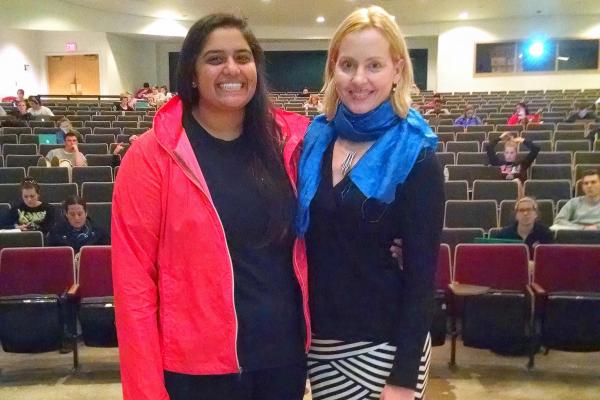Classics and Medical Humanities

A new field of study, Medical Humanities, is emerging at select American universities and the Department of Classics at Ohio State is helping to lead the way. Assistant Professor Julia Nelson Hawkins and Classics major Aneet Mattu recently described what’s going on with Medical Humanities at OSU, and the roles they are playing in making it happen.
Professor Nelson Hawkins is a founding convener of Medical Humanities, a group of faculty that now stretches across the College of Arts and Humanities and the Medical School. This group is creating a new curriculum to serve both pre-med students and humanities majors who plan to make their careers in STEM fields with a medical connection (histotechnology, physical therapy, etc.).
One of the most important goals of this new curriculum is to sensitize future doctors, nurses and other healthcare professionals to the travails of being a patient. Traditional modern medical training tends to objectify a patient as an illness—an abstract problem to be solved, which will unfold itself in a neat linear manner. Hippocratic medicine, in contrast, embraced the idea that the whole patient had to be considered; the Hippocratic doctors of antiquity were trained in philosophy and rhetorical narrative as well as in medical science.
By guiding students through great literary works about illnesses and their effects on the human body and soul—works such as Sophocles’ Philoctetes, Joan Didion’s The Year of Magical Thinking, or Jean-Dominique Bauby’s The Diving Bell and the Butterfly—as well as through study of the Hippocratic approach to the whole patient, professors in the Medical Humanities program help future healthcare professions understand that no illness is experienced in quite the same way by two different people. Through one-on-one sessions with faculty in the Medical Humanities group, students begin to develop sensitivities that enhance their abilities to understand and communicate with patients as individual sufferers. Better communication, in turn, aids in the diagnosis and treatment of illnesses.
Another important facet of Medical Humanities is teaching healthcare professionals how to help patients tell their own stories. Professionals almost always enter the ‘story’ of an illness in medias res; patients need to be encouraged to tell the whole story of an illness effectively so that a proper diagnosis and treatment can be determined.
Aneet Mattu came to Ohio State after six years at Northeast Ohio Medical University because she wanted to enrich her undergraduate experience. After enrolling in a Classical Myth course taught by Associate Professor Tom Hawkins, she was ‘hooked into becoming a classics major,’ as she said, but she also began working with Dr. Linda Stone at OSU’s medical school because she wanted to do a senior thesis on the Hippocratic Oath. The two decided to start an undergraduate initiative that would become part of Dr. Stone’s larger Humanism in Medicine Initiative—an initiative that last year one the prestigious Arthur P. Gold Humanism Foundation Award, which recognizes efforts from within science to reach out to humanities.
The undergraduate group, which is mentored by Professor Nelson Hawkins, Dr. Stone and Dr. Georgia Paletta (the Director of Admissions at the College of Medicine) works to introduce undergraduates in all healthcare disciplines to the idea of humanism. It emphasizes the important role that personal connections and empathy can play in healing not only the body but also the soul.
Throughout the year, the group sponsors events such as movie screenings, herb plantings, guest speakers, visits from poets.
As Mattu said, ‘Dr. Hawkins and Dr. Stone have paved an amazing path for the future of medical education here at OSU because they have decided to go to the heart of caring.’
